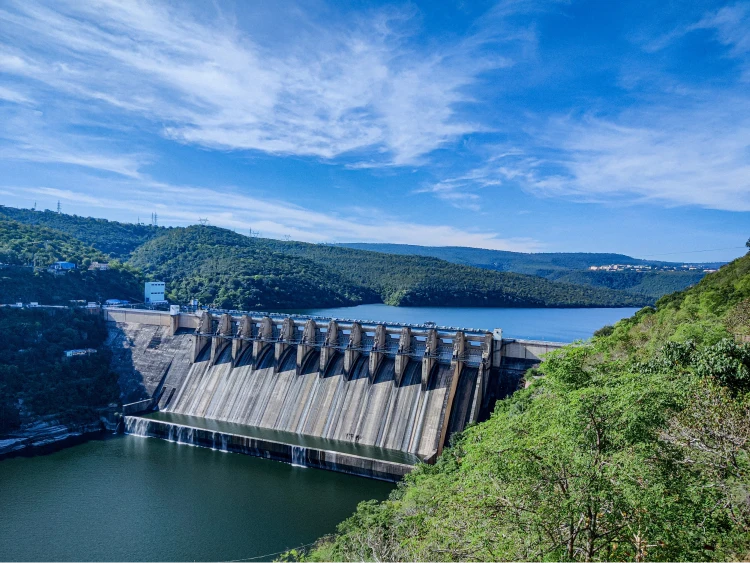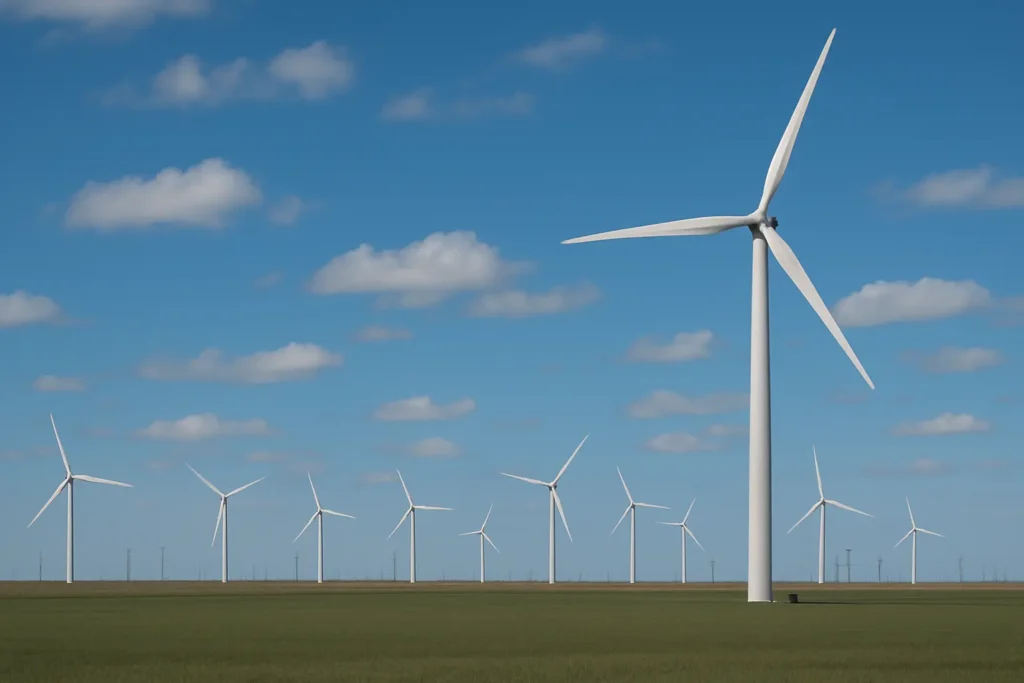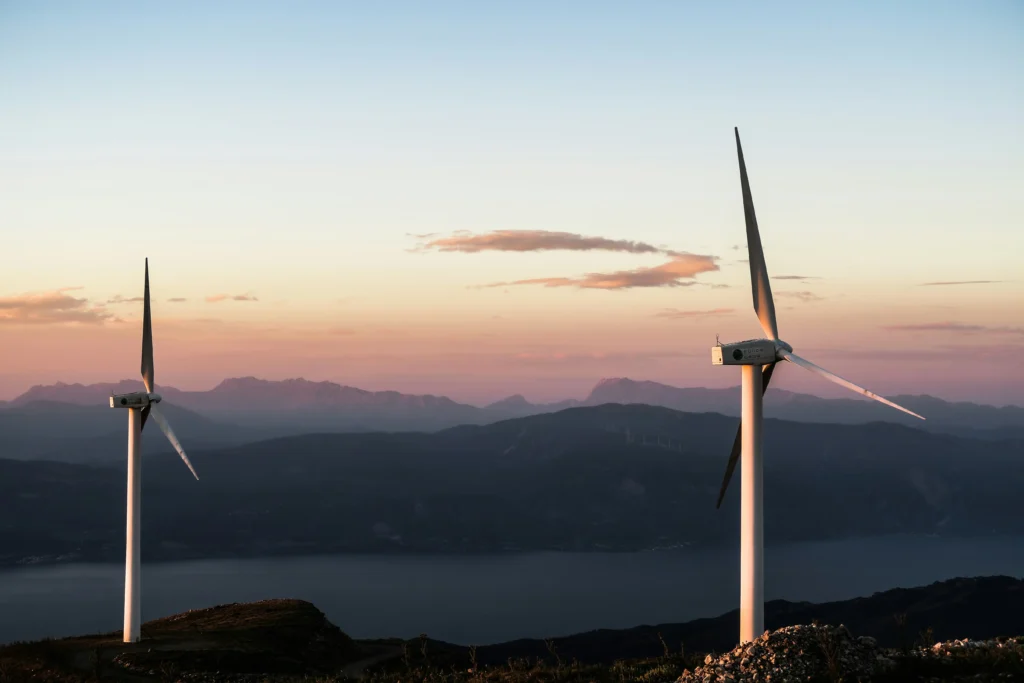The Largest Wind Farms in Texas
5 minute readDiscover how Texas dominates U.S. wind power with massive utility-scale projects.
Home > Learning Center > Energy Production > Pros and Cons of Renewable Energy
5 minute read • Last update September 2024

| Pros of renewable energy | Cons of renewable energy |
|---|---|
| Environmental benefits | High upfront costs of homeowners |
| Cost savings on energy bills | Intermittence and variability in production |
| Lower operating costs due to reduced maintenance needed | Not 100% carbon-free |
| Waste reduction | Require lots of space |
| Government incentives | Require maintenance |
| Increase residential property value | Limited to specific geographic regions |
| Reduce international energy dependence | Difficult to store excess power |
| Create lots of jobs | Conflict over land use and wildlife habitats |
| Cleaner air | Difficult to recycle old systems |
| Can reduce wholesale electricity costs | Can be aesthetically unpleasing |
Renewable energy resources significantly reduce carbon emissions and other pollutants, leading to a healthier environment for everyone.
Unlike the fossil fuels produced at traditional power stations, renewable energy technologies do not directly produce greenhouse gas emissions, which are the leading cause of global warming.
Switching to a renewable energy source also protects against rising energy prices. Once the initial costs of installation are covered, renewables generate electricity at a very low cost.
When solar panels are installed on a home, this can lead to significant utility bill savings over the lifespan of your system, which could be 25 years or more.
Plus, renewable technologies will likely become more efficient as they evolve, resulting in even bigger savings.
Renewable energy technology, such as solar panels and wind turbines, has fewer moving parts and is, therefore, less expensive and easier to maintain than fossil fuel power plants, which rely on complex machinery and high-temperature processes for electricity generation.
Additionally, renewable energy projects eliminate fuel expenses by using natural resources.
Unlike their non-renewable energy counterparts, renewables don’t produce waste materials like ash and sludge. Further waste reduction advantages of renewable energy include the potential to recycle or reuse various components to support the circular economy.
The US government has set ambitious carbon reduction goals to achieve 30% fewer emissions by 2030 and hit zero emissions by 2050. The early adoption of green power has been encouraged through a series of tax credits and rebates for home energy efficiency improvement under the Inflation Reduction Act of 2022.
Additionally, the government has invested $2.7 billion into the nuclear energy supply chain and the development of new nuclear plants to reduce fossil fuel reliance.
Did you know that properties with solar panels sell for at least 4% more than those without? Homes with renewable energy systems are perceived as modern, energy-efficient, and environmentally friendly, making them more attractive to potential buyers.
So, paying a higher premium is often considered an acceptable payoff—especially when the previous owner has already covered the cost of setup and energy storage installation.
Ramping up electricity production through renewable methods like hydro, solar, and wind power decreases our reliance on foreign energy sources because the need to import fossil fuels is reduced. Increased energy independence also helps protect consumers against fluctuating fossil fuel prices, further enhancing economic and social stability.
Renewable energy creates career opportunities across a broad spectrum of roles in research and development, manufacturing, installation, and maintenance industries. The number of jobs in the renewable sector has doubled over the last decade and is expected to increase employment opportunities by a further 40% by 2030.
When we burn fossil fuels, harmful greenhouse gases like sulfur dioxide and carbon dioxide are released, contributing to air pollution. Conversely, renewable energy sources produce little to no carbon dioxide emissions. Cleaner air is a significant benefit, as it directly translates to improved human health by reducing the prevalence of respiratory and cardiovascular diseases.
The predictable cost of renewable energy sources may stabilize and lower energy prices, benefiting both individual consumers and the global electricity generation economy. Plus, as more people become aware of their utility usage and adopt energy-saving practices, overall energy demand decreases, which is also likely to result in lower prices.
While government incentives help to a certain degree, the high upfront cost of installation is one of the most significant renewable energy disadvantages for homeowners. To give you a ballpark idea of the investment required, the US Energy Department estimates that:
While some renewable energy sources, such as tidal power and geothermal energy, provide consistent output, others, like solar, wind, and wave power, depend heavily on weather conditions. Renewable energy intermittency is one of the most significant disadvantages of renewable energy resources, as the variability in production makes it difficult to maintain a steady supply of energy.
While significantly cleaner than relying on fossil fuel resources from traditional coal power stations and other sources, renewable energy systems are not entirely carbon-free.
The manufacturing, transportation, installation, and use of storage technology still result in carbon emissions.
One of the most notable cons of renewable energy is the substantial amount of space required to accommodate large-scale operations. Renewable energy projects can take up to 1000 times more space than fossil fuel equivalents, which presents particular limitations in urban environments. Biomass, hydro, and wind installations take up the most space, while natural gas and nuclear plants take up the least.
Although renewable energy systems generally have lower repair and maintenance costs, homeowners should still be aware of the potential expenses involved, which may include hiring a professional to conduct:
Securing ample storage for any type of renewable energy is more complicated than with a non-renewable resource. One of the biggest obstacles is the limited supply of lithium and cobalt, which are essential for making lightweight, powerful batteries. However, emerging technologies may help to overcome this challenge in the near future.
The cons for renewable energy continue with the realization that its effectiveness is highly dependent on geographic location. For example:
On the upside, this makes them reasonably practical in Texas thanks to our long, hot summers, vast plains and coastal regions, and access to an abundance of water.
Large-scale renewable energy projects often raise concerns regarding land degradation and habitat loss, most notably:
Old solar panels typically contain hazardous materials, like cadmium and lead, which are difficult to dispose of. Consequently, these materials, along with wind turbine blades and lithium batteries, often end up in landfills.
While nuclear reactors, solar fields, and hydroelectric power stations are easier to conceal, many people find the appearance of large-scale wind power installations visually unappealing. A particularly hot topic in residential areas, the aesthetic appeal of turbines has led to widespread debate about whether wind farms are helping or hampering development.
While solar and wind are the most commonly referenced types of renewable energy, they are by no means the only ways to generate green power. Here’s a quick breakdown of all the options.
At BKVE, we take all of the pros and cons of renewable energy seriously. Our number one goal is to help Texans save money on utility bills while working together to forge a cleaner, greener, more sustainable future.
We believe energy is a source of good, and we’re committed to offering simple, affordable, and straightforward homeowner electricity plans tailored to your needs and preferences.
Enter your zip code to learn more and find the right plan for your household.
Graham Lumley, Digital Marketing Manager at BKV Energy, leads digital and traditional marketing strategies, focusing on educating Texans about the state's deregulated energy market. With over 8 years of marketing experience, he creates content to help consumers understand and save on their energy bills, bringing a fresh and dynamic approach to the industry.

Discover how Texas dominates U.S. wind power with massive utility-scale projects.

Get $50 off your electric bill!
Use code BKVEJOINUS50
Enter your zip code to shop BKV Energy's affordable, fixed-rate Texas electricity plans. Use the promo code for $50 off your electric bill.